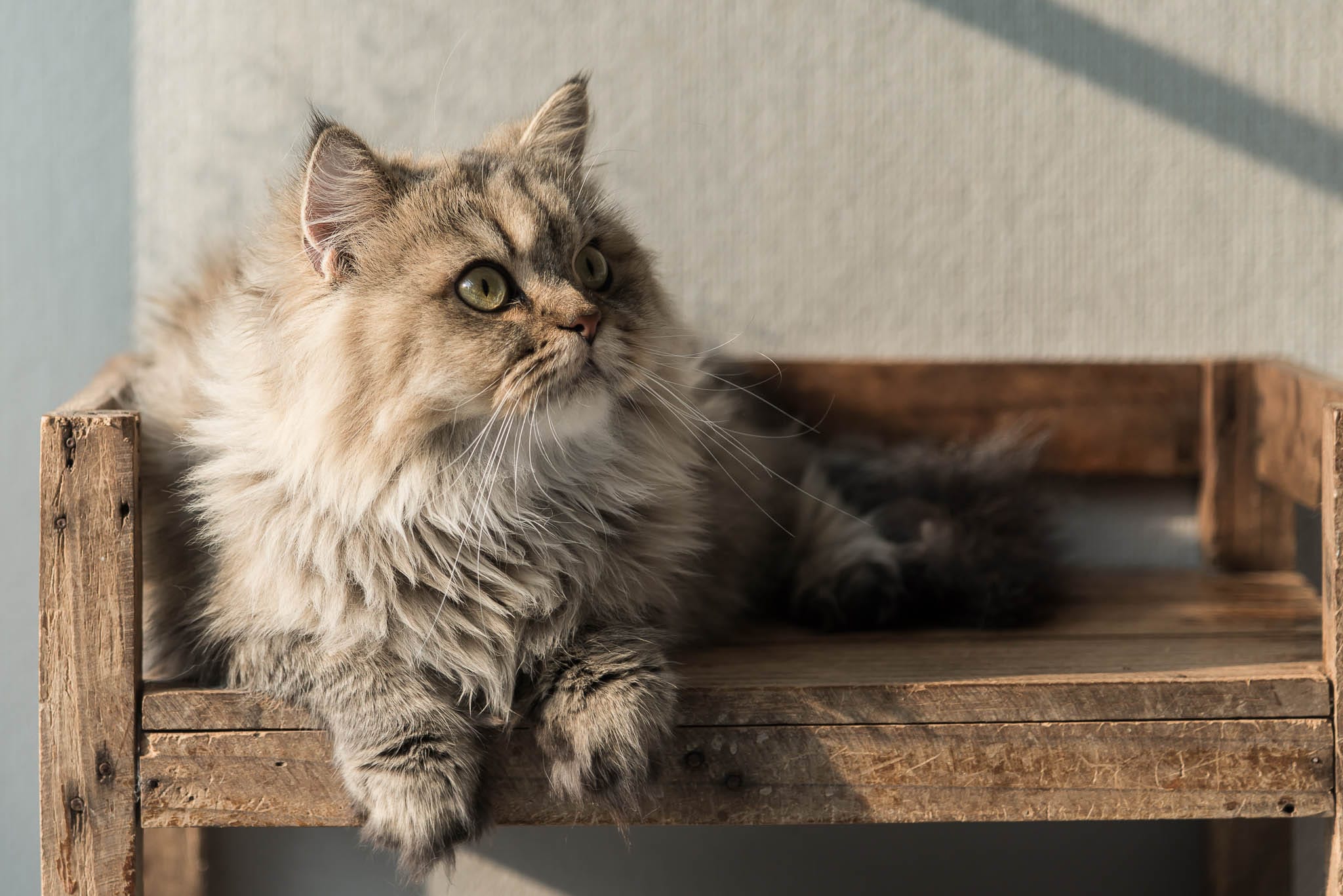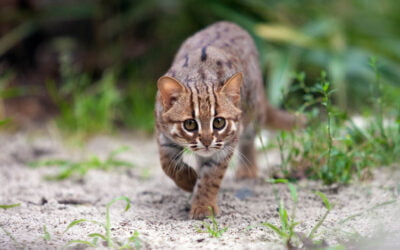Physical description of Domestic Cats
There are many breeds of the domestic cat, but they are all physically similar. Size and length are not very variable, but the fur can change quite a lot. There are long-haired and short-haired cats, some have tiger stripes, some don’t, and the patterns and colors of the fur can vary even within species.
Domestic cats have many vertebrae, which allows for more movement in the spine, both ventrally and rotationally. This allows for a more agile body and is what gives rise to the saying a cat always lands on her feet.
It is worth noting though, that this flexible spine is something that we notice as we live closely with cats and compare them to ourselves and to dogs. Wild cats also have the same vertebrae and flexibility.
Distribution and habitat of Domestic Cats
Do I need a page for the domestic cat here? I think we all know enough about it, and there is a wealth of information available through other channels. On second thoughts, maybe cute kitten videos aren’t very informative.
Felis catus, the domestic version of the felid family, can be found on every continent and the majority of islands, with the exception of the Antarctic.
For the most part, domestic cats live in regions populated by humans, from villages to cities, though the feral populations live in ‘wilder’ areas. However, these wilder areas are still human-dominated and are often rural or near rural regions. Feral domestic cats are at home in open areas and in forests.
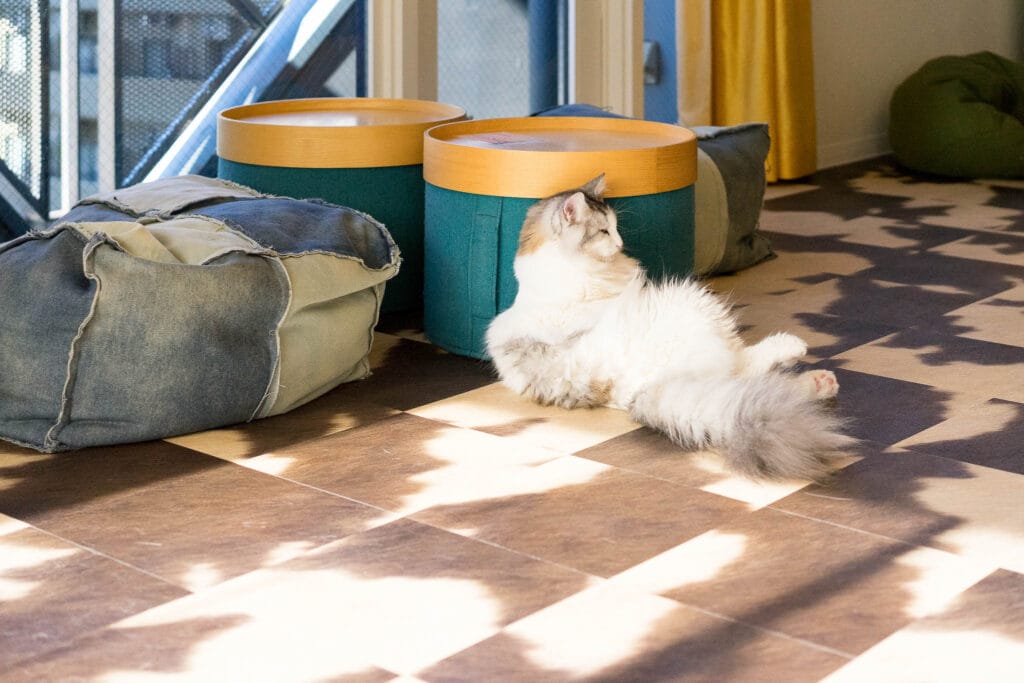
Domestic Cat behaviour
Domestic cats are territorial and will mark their ranges with urine. Tom cats are known for this at home, and the smell can be unpleasant indoors. Other forms of marking are rubbing of the neck, cheek and back of the head area, and scratching. Domestic cats even have scent glands on their feet so not all scratching is just claw sharpening.
The territories of domestic cats can be vastly different. Some are farm animals, and others are city dwellers. Depending on the setting, territories can be exclusive or shared. Generally, in open rural areas, males tend to keep large and separate territories. On the other hand, in cities, they will have overlapping territories, which can lead to increased conflict. Male territory overlaps that of females as with other felid species.
We are all well aware of the communication skills of domestic cats. Purring and meowing are common, and most cat owners understand the body language of their pets.
While hunting is not important to most domestic cats, they certainly do maintain this skill. Vision and hearing are exceptional, with vision adapted to low-light situations.
Feral domestic cats are generally solitary like most other cats. They have no problem resuming their hunting, as has been witnessed extensively in the Chernobyl Exclusion Zone, where hundreds of pets were left behind when it was evacuated. They have comfortably become efficient hunters again.
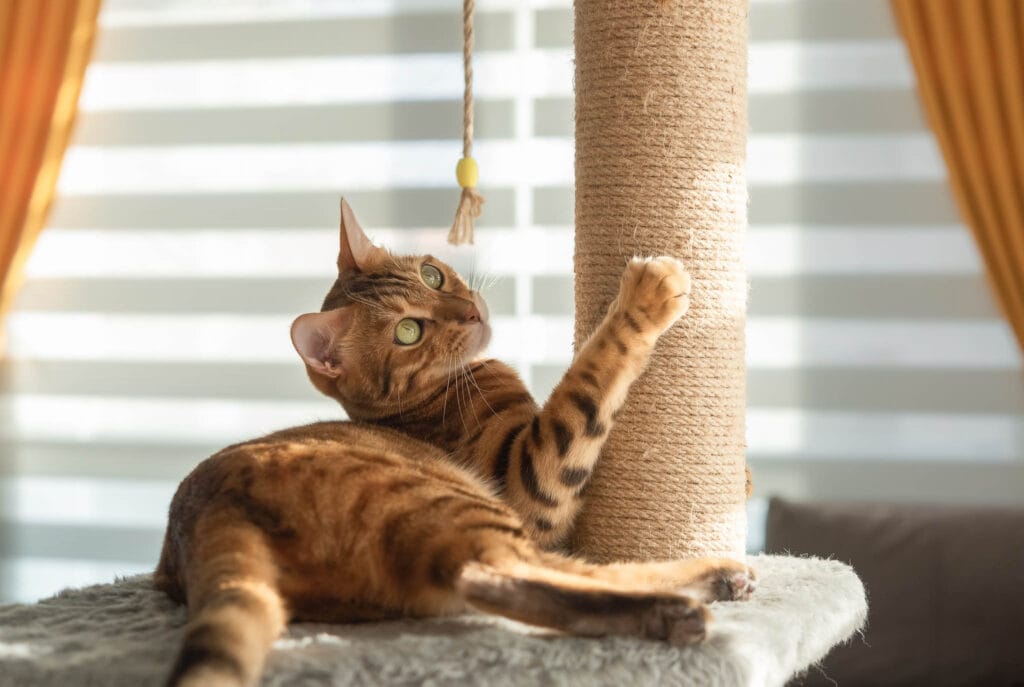
What do Domestic Cats eat?
Domestic cats are carnivores. All cats are. Most cats who live outside hunt small mammals like rodents or small birds. These catches are not necessary for their diet but are primarily used to maintain hunting skills. Feral domestic cats will eat whatever they can get their paws on and include some fish and insects in their diets.
Mating and Parental care of Domestic Cats
Domestic cats breed during the summer (depending on region). They generally have multiple partners, and males take no part in raising offspring, as is the case with most wild cats. Kittens are weaned after about eight weeks and become ‘independent’ at six months.
Who preys on Domestic Cats?
As a small species, the domestic cat can be prey to other larger carnivores. However, a lot of individuals escape this fate as they live in fairly protected areas. The lack of wildlife living around most domestic cats means that bears, wolves and other large cats are not much of a threat in general.
For feral cats, this is a different story, depending on where they live. They can often come into conflict with mid-size predators like foxes.
How long do Domestic Cats live?
Lifespan is approximately 15 years.
Domestic Cats and their ecosystem
Like most cats, domestic cats help to keep the population of their prey animals in check. However, since most domestic animals are well-fed, hunting isn’t a primary need. Nevertheless, a population of domestic cats in an area will keep rodents such as rats and mice, animals considered to be pests in areas of dense human habitation, at bay.
This is one of the reasons that cats came to be so important to humans. Throughout history, cats have been used to keep the local rodent population under control.
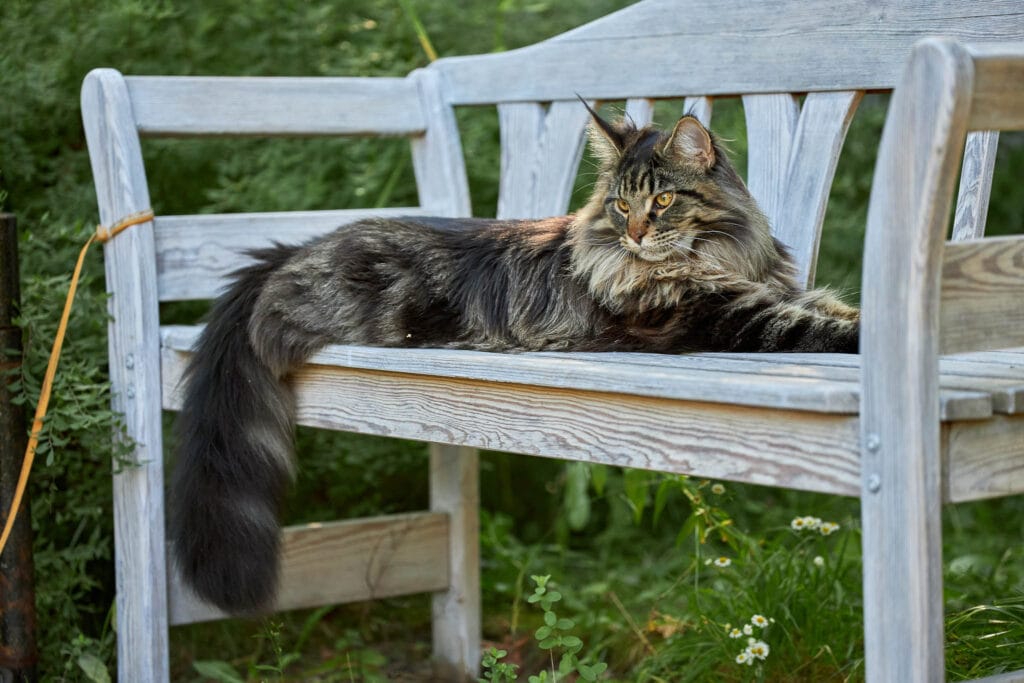
Impact of Domestic Cats on the human economy
The biggest benefit to humans of domestic cats is obviously cute YouTube videos. This is closely followed by the comfort and companionship of having a pet.
Previously, the effect of pest control was important on farms, but nowadays, it is much less necessary, especially in the Western world.
On the flip side, domestic cats are so numerous that they are a significant pest themselves. While we still enjoy the lack of rodents in our living spaces, areas with high cat populations suffer a considerable decline in small bird populations. In areas with large numbers of feral cats, this is even more significant.
Their ability to hunt mice and voles has a knock-on effect on the well-being of birds of prey. Birds like kestrels and buzzards depend on small mammals, and both species struggle in areas with high cat populations.

